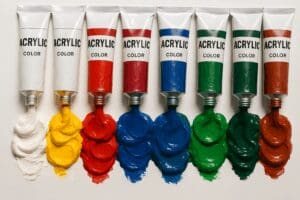Welcome to IrishArtMart.ie, your ultimate destination for all things art! Whether you’re a seasoned artist or just beginning your artistic adventure, we’re here to provide insights that will elevate your skills and bring your creative visions to life. In this blog post, let’s delve into the captivating realm of underpainting—a foundational technique that sets the stage for successful artwork. Read on for valuable tips and techniques to master the art of underpainting.
What is Underpainting?
Underpainting involves applying an initial layer of paint to a canvas before adding the final layers of color. It acts as the groundwork for the overall composition, providing structure, depth, and tone to the artwork. This widely-used technique enables artists to establish a solid foundation for their creations and enhance the final layers of paint.
Tips for Underpainting:
1. Choose the Right Colors:
Opt for a limited color palette for your underpainting. Grayscale or earth tones work well, as they help establish values without distracting from the final color scheme.
2. Establish Composition:
Utilize the underpainting stage to define the composition of your artwork. Outline major shapes, elements, and focal points to guide your subsequent layers.
3. Consider the Medium:
Tailor your underpainting technique to the characteristics of the painting medium—be it oils, acrylics, or watercolors.
4. Experiment with Techniques:
Explore various underpainting techniques like glazing, scumbling, or blocking in to discover what best suits your style and subject matter.
5. Build Texture:
Create texture during the underpainting stage using techniques such as impasto or sgraffito to add visual interest and depth.
6. Keep it Loose:
Maintain a loose and expressive brushstroke during underpainting, avoiding excessive detail. Focus on capturing the essence of the composition.
7. Let it Dry:
Allow the underpainting to dry completely before proceeding to subsequent layers. This ensures a stable foundation and prevents unintentional color mixing.
8. Adjust Values:
Pay careful attention to values in your underpainting. Adjusting contrast and tones at this stage sets the tone for the rest of your artwork.
External Links for Further Reading:
1. The Importance of Underpainting
2. Underpainting Techniques in Acrylics
3. Mastering the Underpainting Process
*For collaborations, art features, or inquiries, please contact us at in**@**********rt.ie. Don’t forget to follow us on Instagram, Facebook, Twitter.
Disclaimer: The views and opinions expressed in this article do not necessarily reflect the official policy or position of Irish Artmart.





